The local dollar general sells toilet cleaners with 3 different active ingredients. From right to left:
- 9.5% Hydrocloric Acid (Lysol POWER)
- 1.2% Hydrogen Peroxide (Lysol with HydrOgen perOxide)
- 2.4% Sodium Hypoclorite (Clorox Clinging Bleach Gel)
We get our water from a well, and it has enough iron in it that we build up rust deposits in the toilet, so that is the primary cleaning challenge. I didn’t clean the toilet for a month to make things stand out in photos better (“No Dear, I can’t clean the toilet because of SCIENCE!”) And then I gave each product a chance on 1/3 of the bowel. (NOTE: I was sure to rinse one product out of the bowl before testing a different one to avoid bad interactions! Both the hydrogen peroxide and acid specifically warn you to NOT mix with any type of bleach. I also ran the bathroom fan continuously and stayed well away from the room while letting them sit.)
Presented in order of their effectiveness:
Hydrochloric Acid (Lysol POWER)
I followed each manufacturers’ instructions for “removing tough stains”. In this case, it was to remove water from the toilet bowl (I turned off the supply valve and flushed, lowering the water level quite a ways past the normal level), and to leave the acid to sit for 15 minutes (the other two products specified 10 minutes of siting time). I then gave that third of the bowel a good, but not super scrubbing (around 30 seconds) with a green scrubbing sponge.
I was relatively happy with the results. The rust deposits were gone, although there were still a few left over “gray” streaks where the water goes down the bowel. (I should note that this toilet is probably over 20 years old.)
As it turns out, none of the three products removed these gray streaks, so they will probably require some serious elbow grease and a pumice scrubbing stone. They are more visible on this third of the toilet only because of the direction of lighting in the bathroom.
Sodium Hypochlorite (Clorox Bleach)
The Clorox (“Clinging Gel”) Bleach instructed me to use 50% more product (6 oz per bowel application, as opposed to the 4 oz per bowl specified by the other two products), so I was generous. But keep in mind that the bottle sizes of all three are the same (24 fl oz), so you only get 4 applications with the bleach instead of 6 for other two. The bleach was also the only product that instructed me to scrub BEFORE letting it sit (for 10 minutes). As they did not have any specific “tough stains” instructions I followed the regular instructions. Although I scrubbed for the same 30 seconds, it may have been less effective with the Bleach than the others, as I couldn’t easily SEE what I was scrubbing (I was trying to leave as much bleach as possible “clinging” to the bowel for the following 10 minute wait, so I didn’t get the sponge wet to wash it off)
Even so, it did a relatively good job and almost all of the rust deposits were removed, but it wasn’t quite as good as the acid. I had hoped that perhaps the bleach would, well, bleach out the gray marks as well, but they were left the same as well.
Hydrogen Peroxide (Lysol)
I was disappointed with hydrogen peroxide’s performance. It was the second product I tried (on the front of the bowl), but it performed the worst.
As you can see, although some cleaning occurred, it left some significant rust marks behind. I could have left the results of the bleach and acid and been done with cleaning the toilet, but I felt the need to clean this third of the bowl again after I performed my tests (I actually used both the acid and the bleach on the whole bowl later on…nothing like taking close up pictures of your toilet to make you decide it needs more cleaning.)
It may be that the front of the bowl has slightly different conditions than the sides and back, but when I came back later and used the acid in the same location it cleaned the rust streaks right up.
Other considerations
The acid claims “Will not harm plumbing or septic systems”, something the other two do not. (Although pedantically, it didn’t mention any beneficial bacteria in your septic system.) Since we are on a well & septic, and the hydrochloric acid worked the best, I’ll keep using it.
All three products are a “Hazard to humans and domestic animals”, but the acid appears to have the worst effects, as its bottle requires the use of protective gloves (the bleach only recommends gloves for “prolonged use”, while the hydrogen peroxide doesn’t mention gloves at all). Reading the “notes to doctors” sections on the bottles makes the acid seem like the absolute worst to drink, followed by the bleach, and the Hydrogen Peroxide only warns about potential eye irritation (but please don’t drink it).
All three products claimed to kill 99.9% of “Viruses & Bacteria”, “Bacteria”, or “Germs”, depending upon the product. Reading the fine print on the Clorox bleach, “Germs” was a collection of viruses and bacteria similar to that killed by the hydrocloric acid, so the bleach and acid work on both, and apparently the hydrogen peroxide was only tested on bacteria. (And not even the scary bacteria like E. Coli and Salmonella.)
Summary
The bleach and acid worked well, although the acid did a slightly better job on the rust stains from the hard water. Combined with the fact that it claims to be safe for septic systems, the acid is my choice. I wasn’t impressed with the 1.2% hydrogen peroxide, but it does appear to be the less toxic choice if you don’t like using or keeping harsh chemicals around the house.
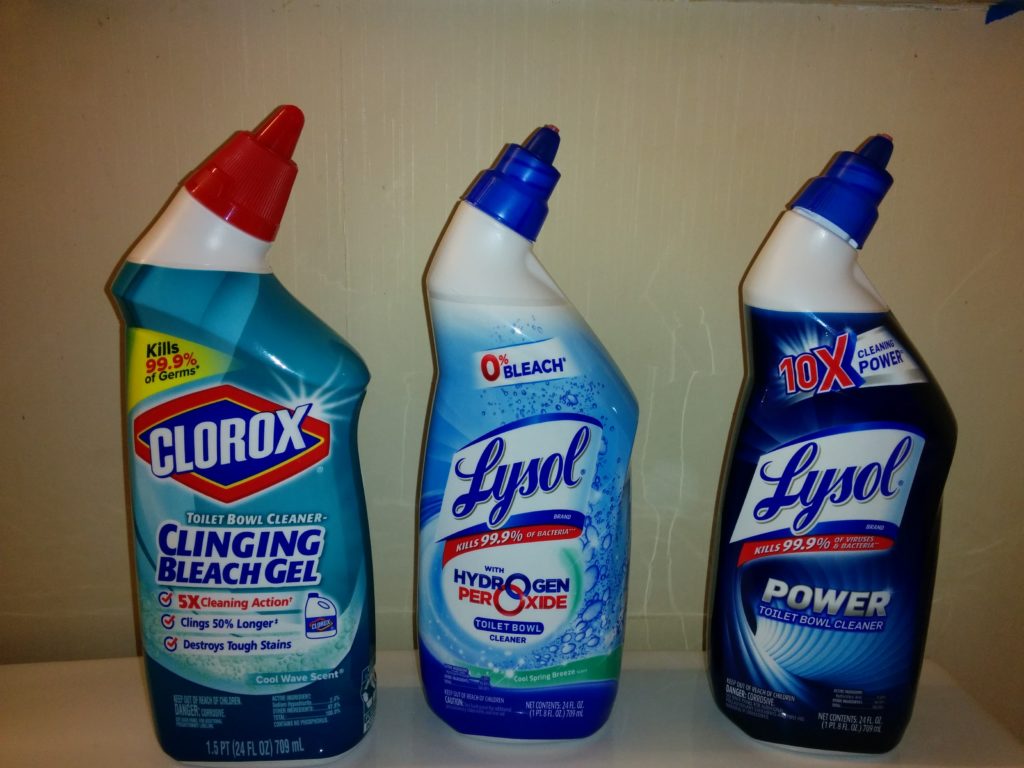


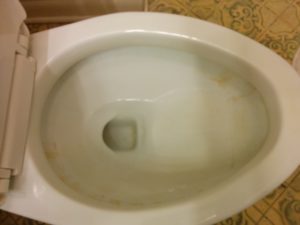
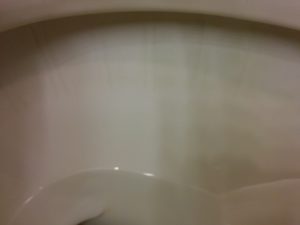

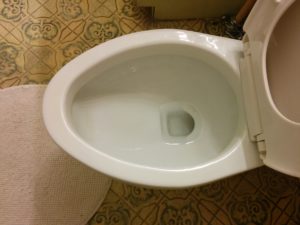
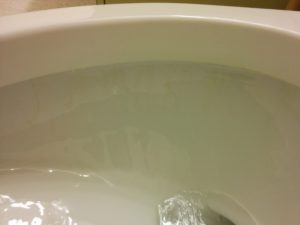
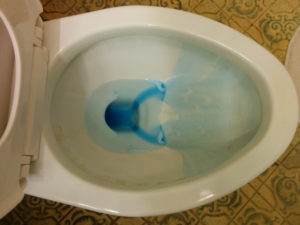




Pingback: 11 Astuces pour Bien Nettoyer une Toilette - Astuce Innovante